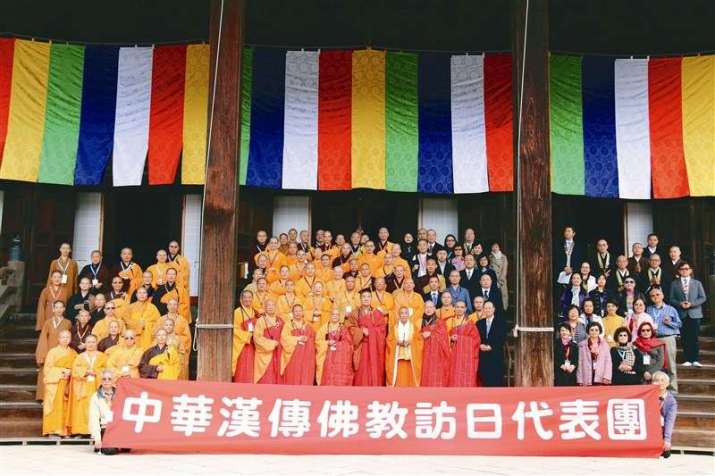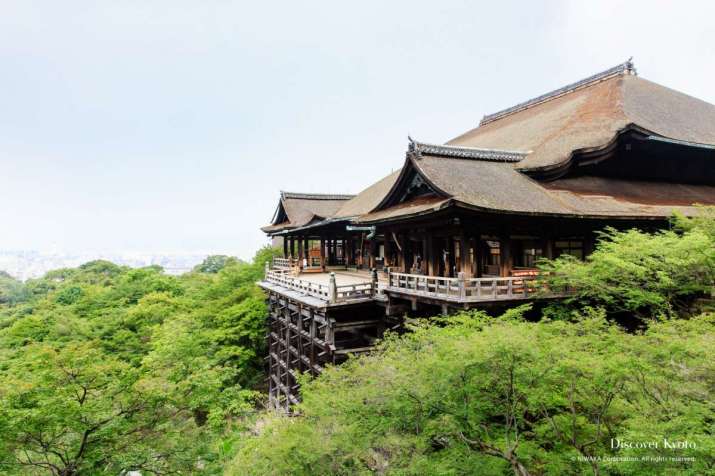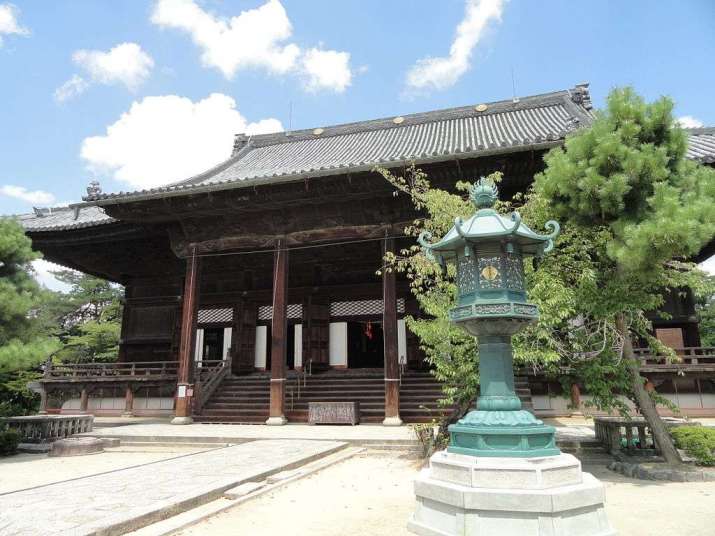NEWS
Chinese Cross-Strait Buddhists Hold Landmark Meetings with Japanese Buddhist Leaders
 Representatives of the Chinese delegation. From merit-times.com
Representatives of the Chinese delegation. From merit-times.comA delegation of Buddhists from mainland China and Taiwan recently visited several Japanese Buddhist institutions as part of a series of ecumenical meetings with Japanese Buddhist leaders.
The delegation was led by Ven. Zhan Ru, vice president of the Buddhist Association of China, and Ven. Ci Rong, chairman of the United Association of Humanistic Buddhism. They were joined by other major Chinese Buddhist leaders, including Ven. Ming Hai, another vice president of the Buddhist Association of China, and Kuomintang politician Steven Huang Shu-wei.
The six temples on the mission’s itinerary have a history of Sino-Japanese exchange and Sino-Japanese ecumenical dialogue. Some of the temples even have a direct link to China. Toshodai-ji, in Nara, for instance, was founded by the Chinese monk Jianzhen (founder of the Ritsu school in Japan) in 759 and is now a Risshu-affiliated temple. Manpuku-ji in Kyoto, named after Wanfu Temple in Fujian, China, was founded in 1661 by Chinese Linji monastic Ingen (who founded the Obaku school of the Rinzai tradition).
 Otowa-san Kiyomizu-dera. From discoverkyoto.com
Otowa-san Kiyomizu-dera. From discoverkyoto.comThe other temples include Otowa-san Kiyomizu-dera in eastern Kyoto, founded in 778 by Sakanoue no Tamuramaro, Hyakumanben Chion-ji, also in Kyoto, which is affiliated with the Jodo Shinshu school of Japanese Pure Land Buddhism, Shokoku-ji, one of the “Great Five” Rinzai Zen temples of Kyoto and was founded in 1382 by the shogun Ashikaga Yoshimitsu (1358–1408), and Myoshin-ji, the head temple of Rinzai’s Myoshin school that was established in 1342 by Kanzan Egen (1277–1360).
The delegation’s visit to Otowa-san Kiyomizu-dera was symbolic given the temple’s ecumenical history. It was here that in 1974 householder Zhao Puchu (1907–2000), one of modern China’s most influential Buddhist leaders and powerbrokers, founded the Japan-China Friendship Buddhist Association (日中友好佛教協會), which in 1993 also admitted Korean Buddhists, forming a Sino-Japanese-Korean exchange of Buddhist ecumenical activity. It subsequently became the Sino-Japanese-Korean Buddhist Friendship and Dialogue Association (中日韩佛教友好交流预备会), which held its 21st congress, in Kobe, Japan, on 25 April.
On 18 April, the Chinese delegation visited Hyakumanben Chion-ji, where they chanted Pure Land invocations alongside other monastics and householders. They also met with the temple’s Dharma Master Ryuzen Fukuhara, who serves as vice president of the Japan-China Friendship Pure Land Association (日中友好淨土宗協會).
 Hyakumanben Chion-ji main hall. From wikimedia.org
Hyakumanben Chion-ji main hall. From wikimedia.orgThe exchanges during the trip were congenial. Ryuzen Fukuhara paid tribute to Zhao Puchu, praising him for “ushering in a golden age in relations between Buddhists in China, Japan, and Korea, helping to transcend the boundaries of nationhood, and promoting mutual and multilateral friendship in accordance with the Buddha’s teachings.” (The Merit Times)
In exchange, Ven. Zhan Ru presented him with a calligraphic scroll reading “bu wang chuxin” (不忘初心), which roughly translates to “Not forgetting the original heart,” while Ven. Ci Rong gave Fukuhara a copy of the Pure Land sutras from the Chinese Buddhist canon (the collective body of sutras is traditionally called the Great Treasury of Sutras or da zang jing).
The meetings illustrated that the future of the East Asian Buddhist traditions depends on cooperation between the schools and lineages of Mahayana Buddhism, regardless of national boundaries, emphasizing communication as a way through which peace and brother/sisterhood can be maintained.
See more
Uphold the Buddhist Teachings: Sino-Japanese Buddhist Friendship (Chinese only) (The Merit Times)
Landmark Visit by Cross-Strait Chinese Buddhists (Chinese only) (The Merit Times)
Sino-Japanese-Korean Buddhist Friendship and Dialogue Association Holds Congress in Japan; Grandmaster Ming Sheng Takes Part (Chinese only) (QQ.com)
Related news from Buddhistdoor Global
Chinese Delegation Visits Buddhist Sites in Pakistan’s Khyber-Pakhtunkhwa
Archaeologists in China Unearth Sutra Translation by Tang Dynasty Monk Xuanzang
Master Hsing Yun Articulates Vision for China’s Buddhist Future
Related features from Buddhistdoor Global
The Cypress in the Courtyard: An Interview with Venerable Ming Hai
Buddhistdoor Special Project














